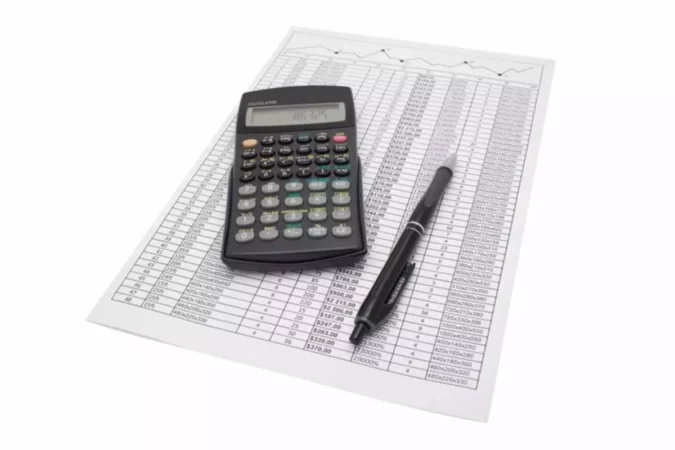Overview
It is not a secret for anyone that the reliability of financial statements and accounting data can and should be checked. In this regard, there are corresponding provisions in accounting practice. They provide for the need for an inventory of liabilities and assets or more specifically, account reconciliation.
The word reconciliation means to bring together or to make one. So, what are you bringing together? These are generally the accounting records and the bank statement. This procedure allows you to confirm the presence of liabilities and assets and to ensure that their balances are correct. Owners and managers of organizations can set the frequency of verification activities in accordance with the actual needs of their entity.
If you are familiar with the balancing of your checkbook, then you are already familiar with account reconciliation. Basically, you are going through the same process only with your bookkeeping reasons for the same reasons, which we will go over next. This process does not necessarily have to be formal, although some companies create a bank reconciliation report to show that they are doing account reconciliation on regular basis. If you do not do this procedure on a monthly basis, you can do it daily, quarterly, or for any other period.
What is the purpose of the reconciliation?
Account reconciliation may be required to verify the correctness and truthfulness of accounting. It is obligatory in case of reorganization of the enterprise in any form (e.g. merger) or bankruptcy of the company. Reconciliation will be relevant when restoring accounting or when such records are maintained in an Excel spreadsheet or are handwritten. Verification measures are indispensable in financial disputes with counterparties that do not fulfill their obligations.
The purposes of the account reconciliation can be different. First of all, it is the confirmation of data for accounting purposes. Also, the reconciliation will make it possible to legally demand (including in court) the fulfillment by counterparties of contractual obligations for the supply of goods, performance of work, provision of services, and repayment of obligations.
It will not be redundant when changing an accountant. It also makes sense to order the account reconciliation service if there are more frequent cases of receiving notifications from the counterparties about errors in payments, calculations, and other reporting documents. Reconciliation accounts receivable and payable will allow you to receive up-to-date information on the fulfillment of the obligations between you and your counterparties.
Account reconciliation process
Your bookkeeping records must contain all the internal transaction data necessary for account reconciliation. Banks and other financial institutions usually provide easy online access to all the information regarding the money coming in and out of your account. Some online accounting software will partially automate this process, although you still need to control it. When looking at the internal accounting book or software and the bank statement of the company, you would want to compare both line by line and see if all the numbers and transactions coincide.
To reconcile accounts, compare your own records with the statement provided by your bank, credit card company, or another entity. Check each transaction separately to ensure the amounts match exactly and note any differences that require further investigation. It is important to make sure your bank statements show a total account balance that matches your internal accounting records. If the amounts do not match, you need an explanation for the existing difference.
What if something doesn’t match? It’s okay if you have minor differences due to timing, including transactions that have not yet been settled by the bank, but you can easily explain these differences. For instance, you can write a check to the supplier, reducing the balance of your account in the internal accounting records, but your bank will show a higher balance until the supplier actually goes to the bank to cash the check.
If you can easily explain the discrepancies, then you probably have nothing to worry about. If it takes longer to troubleshoot the inconsistencies, there may be more serious problems that need to be resolved. Accordingly, you would need to make appropriate accounting entries that would balance out these discrepancies until you are able to get to the bottom of the issue, if possible.
Reconciliation with counterparties
Different data can be compared within the framework of account reconciliation activities. The specific direction of verification can be selected taking into account the need to obtain information at a specific point in time. You can make a reconciliation today for:
- suppliers
- accounts payable
- accounts receivable, and so on.
Reconciliation of settlements with suppliers, buyers, contractors is a separate topic. It is carried out at the initiative of the interested party. The basis for reconciliation may be a change in the rules for working with counterparties, a change in personnel responsible for mutual settlements, a failure of one of the parties to the agreement to fulfill its obligations, etc.
The main problem with verification activities is that the initiative of one counterparty to conduct an account reconciliation does not always lead to an appropriate response. In other words, the second party may delay the provision of data, etc. Such risks can be minimized if the company holds on to the primary documents and can use them along with the records provided by the financial institution to check the accuracy of the accounting records.
Example
| Internal Bookkeeping Records | Bank Statement | |||
| June 1st | $1,000 | June 1st | $1,000 | |
| Payment to Parts Supplier | -100 | Payment to Parts Supplier | -100 | |
| Received from Customer A | 800 | Received from Customer A | 800 | |
| Payment for Electricity | -300 | Received from Customer B | 800 | |
| Payment for Rent | -700 | Debit card transaction | 500 | |
| Payment for Electricity | -300 | |||
| Bank Fees | -10 | |||
| Bank Interest | 2 | |||
| June 31st | $700 | June 31st | $2,692 | |
Above, you can see that the owner has some business transactions recorded in his own bookkeeping records. However, when you look at the bank report, you can tell right away that there are many differences and the balances at the end of the month are not the same. The fact that the two do not match is the reason why you need to do an account reconciliation because every transaction that can be seen on the bank statement will not appear in the bookkeeping records.
Such discrepancies can occur for various reasons. It might be simply because the business owner does the bookkeeping on his own and does not remember or have time to enter all the transactions. This can also be negligence from the bookkeeper’s side.
The customer might also make a payment and not inform the business owner about it and so on. When an employee or a business owner pays with a bank card, the transaction can be missing in the bookkeeping records unless that individual brings in the receipt and tells about it. Similarly, not everyone remembers to account for bank fees or realizes that their check bounced.
In the example presented here, there are four transactions that appear on the bank report but are not accounted for in the bookkeeping records. The bank fees and interest and the easy items that do not need much checking to ensure that the transactions are accurate. When it comes to debit or credit card transactions, you need to see if it is possible to tell what the payment was made for, if it was approved by your business and if everything is fine, then ensure the transactions are recorded in the appropriate bookkeeping accounts.
The payment that was received from Customer B will need to be traced to the order from Customer B to ensure that the amount is correct. If the payment amount is correct, appropriate journal entries would need to be made to reflect the receival of revenue and to decrease the amount owed by this customer. Finally, you can see that the check for rent payment was not processed by your bank. In this case, you need to make sure the building owner actually received the check and it is not lost.



















